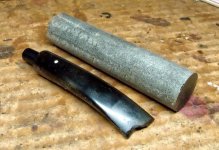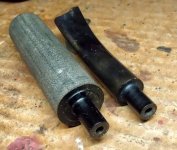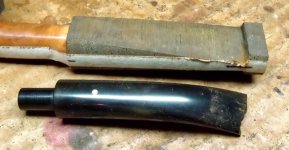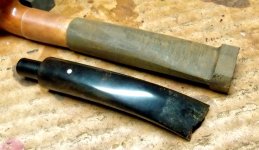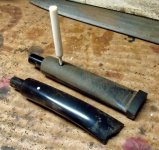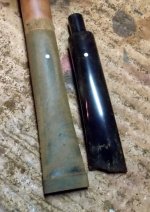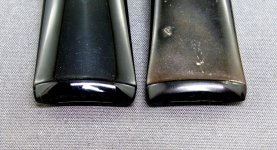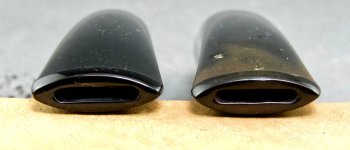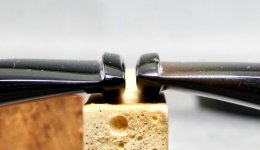No speculation, cuz I made it. 
Only the stem in this case, but the principles remain the same.
The amount of labor necessary to shape something to exactly match something else is FAR greater than shaping it "solo", where the only criterion is that the person creating it is satisfied.
There are world class pipe carvers who could make an entire pipe in the time it took to make this one stem. (And I've had lots of practice, so that isn't the problem. lol)
It's COPYING that's the problem. There is zero room for error. A couple hundredths of an inch can get you "busted"; while an accidental dig or wave or mistake while creating something new only needs to be accommodated.
Anyway, there you go. No one out there is counterfeiting famous brand pipes intended to fool collectors.
If they have the chops to do that, they could make a lot more money---and derive a lot more satisfaction because they wouldn't have to stay anonymous---by making pipes under their own name. (NOTE: There are some basket pipes that are merely stamped with marquee brand names to catch easy marks Nigerian Scam style, but that's an entirely different thing.)
Note: The missing button was copied from a pipe w/the same stem size and design that was made in the same production era. No guessing was involved.
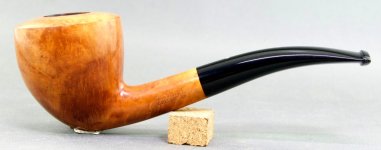
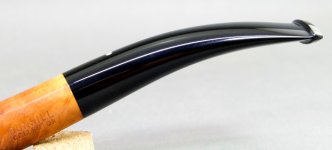
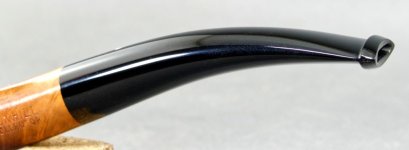
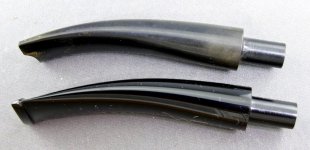
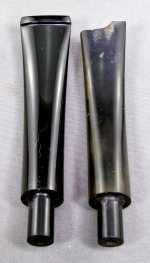
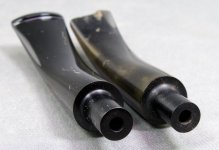

Only the stem in this case, but the principles remain the same.
The amount of labor necessary to shape something to exactly match something else is FAR greater than shaping it "solo", where the only criterion is that the person creating it is satisfied.
There are world class pipe carvers who could make an entire pipe in the time it took to make this one stem. (And I've had lots of practice, so that isn't the problem. lol)
It's COPYING that's the problem. There is zero room for error. A couple hundredths of an inch can get you "busted"; while an accidental dig or wave or mistake while creating something new only needs to be accommodated.
Anyway, there you go. No one out there is counterfeiting famous brand pipes intended to fool collectors.
If they have the chops to do that, they could make a lot more money---and derive a lot more satisfaction because they wouldn't have to stay anonymous---by making pipes under their own name. (NOTE: There are some basket pipes that are merely stamped with marquee brand names to catch easy marks Nigerian Scam style, but that's an entirely different thing.)
Note: The missing button was copied from a pipe w/the same stem size and design that was made in the same production era. No guessing was involved.














